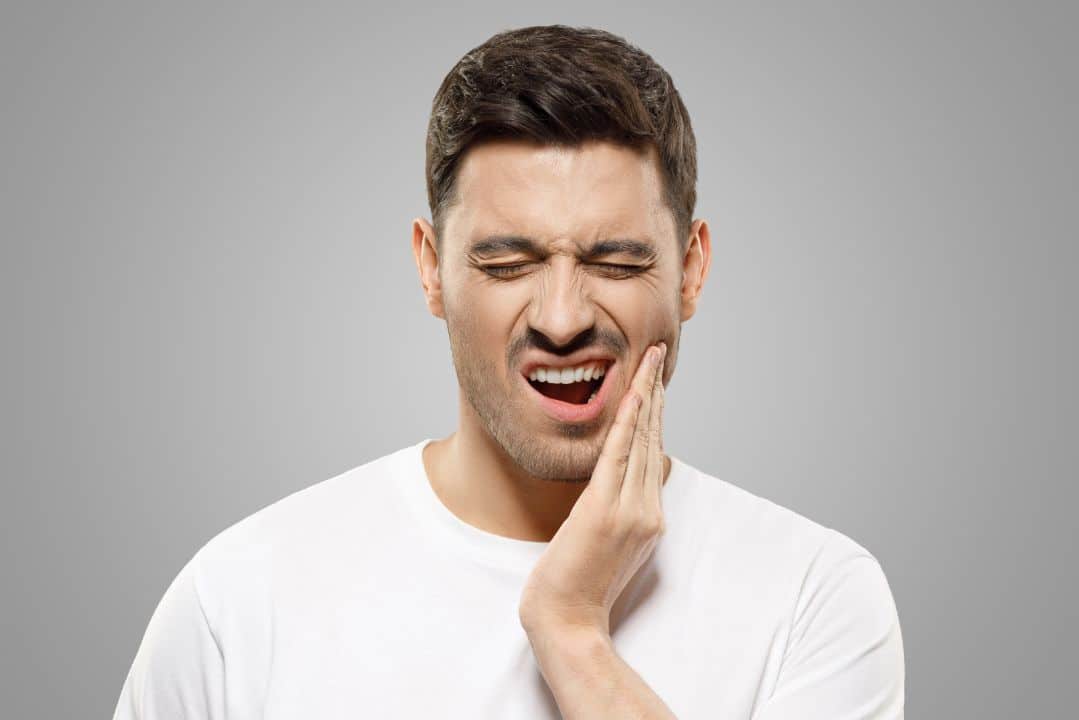TMJ Dysfunction, also known as temporomandibular joint dysfunction, is a jaw disorder causing pain and discomfort. It affects the muscles and joints connecting the jawbone to the skull, leading to symptoms such as jaw pain, discomfort, clicking or popping sounds, headaches, and earaches.
Recognising the signs of TMJ Dysfunction is crucial for seeking appropriate treatment. Understanding the causes of this disorder can help prevent it from occurring or worsening. Fortunately, various treatment options are available to alleviate the symptoms and promote healing.
TMJ dysfunction can cause a variety of symptoms. Here are some of the most common:
If you are experiencing any of the above symptoms, it is essential to consult a healthcare professional to determine if they are related to TMJ dysfunction.
TMJ Dysfunction can have a variety of causes, which can contribute to the development of this condition in both men and women. Here are some common causes:
| Cause | Description |
|---|---|
| Misaligned Jaw | Having a misaligned jaw can cause excessive strain on the joint, leading to TMJ Dysfunction. |
| Teeth Grinding | Bruxism, or teeth grinding, can put pressure on the jaw joint and lead to TMJ Dysfunction. |
| Stress | Stress can result in clenching of the jaw muscles, leading to the development of TMJ Dysfunction. |
| Arthritis | Arthritis in the jaw joint can cause inflammation and pain, leading to TMJ Dysfunction. |
It is important to note that while these are common causes of TMJ Dysfunction, other factors may contribute to this condition. You should consult with a TMJ specialist to determine the root cause of your TMJ Dysfunction.

Photo Credit: LightFieldStudios, Envato
TMJ Dysfunction can cause a great deal of discomfort and pain. Fortunately, several treatment options are available to alleviate symptoms and promote healing. This section will discuss the available conventional and alternative approaches to treat temporomandibular joint disorders.
Conventional treatment options for TMJ Dysfunction include:
| Treatment | Description |
|---|---|
| Oral Medication | Over-the-counter pain relievers such as ibuprofen and acetaminophen can alleviate pain and inflammation. |
| Prescription Medication | Prescription muscle relaxants can be used to reduce muscle tension and pain in the jaw. |
| Dental Splints or Mouthguards | These devices fit over the teeth to help realign the jaw and alleviate pain and discomfort. |
| Injections | Corticosteroid injections can reduce inflammation and alleviate pain in the affected area. |
Your dentist or physician will recommend the best course of treatment based on the severity of your TMJ disorder (TMD) and your individual needs.
Alternative treatment options for TMJ Dysfunction include:
While research on the effectiveness of these treatments is limited, they are generally considered safe and may be beneficial in alleviating TMJ Dysfunction symptoms.
Your healthcare provider can help you decide if alternative treatments are right for you and can recommend a qualified practitioner.

Photo Credit: damirkhabirov, Envato
Along with other treatments, exercises can help ease TMJ Dysfunction symptoms. Here are some jaw exercises that may help:
Performing these exercises only after consulting with your healthcare provider is best. Incorrect execution of these exercises may worsen your TMJ Dysfunction symptoms, so it’s important to do them correctly under supervision.
In a comprehensive overview, Temporomandibular Joint Syndrome (TMJ syndrome) is associated with a myriad of symptoms and causes, leading to discomfort and pain in various areas, including the front of your ears, your jaw joint, and muscles that control jaw movement. These symptoms of TMJ disorders encompass chronic facial pain, pain in the jaw joint and muscles controlling jaw movement, and issues like difficulty opening the mouth or jaw clicking.
For those experiencing TMJ syndrome, seeking treatment is crucial. Conservative measures and interventions, as well as help from specialists in otolaryngology and pain management, may play a significant role in managing TMD pain and improving overall well-being. This information on Temporomandibular Joint Disorders (TMD) can be accessed through sources like the Mayo Clinic patient resources or research journals like the Journal of Pain.
The causes of TMJ disorders may be complex, with possible factors ranging from trauma to the jaw to habitual actions like teeth clenching or grinding. Magnetic Resonance Imaging (MRI) can offer detailed information about the joint that connects your jawbone to your skull, aiding in diagnosis and understanding the extent of damage.

Photo Credit: thelivephotos, Envato
Although some individuals may experience TMD symptoms without treatment, seeking help from healthcare professionals, including dentists like Scrivani SJ, can greatly improve pain and quality of life. It’s important to combine this information with guidance from experts to develop a tailored treatment plan, as TMJ disorders can be difficult to manage without appropriate care.
In some cases, TMJ syndrome could also cause pain conditions in other parts of your body, possibly even contributing to disorders like irritable bowel syndrome. Nerve stimulation techniques and various therapies may benefit those with chronic TMD, offering potential relief and addressing pain beyond the jaw area.
In summary, the intricacies of TMJ syndrome, including its symptoms, causes, and potential treatments, highlight the significance of seeking professional care. Accessing detailed information on Temporomandibular Joint Disorders (TMD), as well as combining insights from medical professionals and reputable sources, can assist individuals in understanding and managing this complex condition that affects the jaw and surrounding areas.
If you’re experiencing TMJ Dysfunction, you likely have a few questions about your condition and treatment options. In this section, we’ll answer some of people’s most common queries about TMD.
It’s important to find a specialist experienced in treating TMJ Dysfunction, as they can provide you with the best possible care. You can start by speaking to your regular dentist or doctor for a referral to a specialist in your area. Additionally, you can search online for TMJ specialists near you.
Many treatment options are available for TMJ Dysfunction, including medication, physical therapy, acupuncture, and surgery. Your treatment plan will depend on the severity of your symptoms and the underlying cause of your condition. A TMJ specialist can help you determine your situation’s best course of action.
Yes, some natural remedies can help alleviate TMJ pain. These include practicing relaxation techniques, using heat or ice therapy, and performing TMJ exercises. However, it’s important to consult with a specialist before attempting any natural remedies to ensure they won’t exacerbate your symptoms.
While it’s not always curable, many people can manage their TMJ Dysfunction symptoms effectively with proper treatment and self-care techniques. If left untreated, the condition can worsen and lead to more serious complications. It’s important to seek professional help if you’re experiencing any symptoms of TMJ Dysfunction.
TMJ Dysfunction, also known as temporomandibular joint dysfunction (TMD), is a condition that affects the jaw joint and the surrounding muscles. It can cause pain and discomfort in the jaw, face, and neck, and may also result in difficulty chewing and speaking.
The exact cause of TMJ Dysfunction is often unknown. Still, it can be attributed to factors such as jaw injuries, misalignment of the jaw joint, arthritis, excessive teeth grinding or clenching, stress, and poor posture.
Symptoms of TMJ Dysfunction may include pain or tenderness in the jaw joint and surrounding muscles, difficulty opening or closing the mouth, clicking or popping noises when moving the jaw, headaches, earaches, facial pain, and a tired feeling in the face or jaws.
TMJ pain can be relieved through various methods, including over-the-counter pain medications, applying moist heat or cold packs to the affected area, practising relaxation techniques to reduce stress, avoiding hard or chewy foods, and using splints or mouthguards to alleviate jaw clenching or grinding.
Surgical options may be considered in severe cases of TMJ Dysfunction that do not respond to nonsurgical treatments. These may include arthroscopy, arthrocentesis, or open-joint surgery. However, surgery is typically seen as a last resort and is only recommended when conservative treatments have failed.
To diagnose TMJ Dysfunction, a doctor or dentist will conduct a physical examination of the jaw and facial muscles, review the patient’s medical history, and may request additional tests such as X-rays, MRI scans, or dental impressions to evaluate the jaw’s alignment and joint function.
In addition to pain management techniques, other treatments for TMJ Dysfunction may include physical therapy, jaw exercises, stress management, acupuncture, chiropractic care, and in rare cases, orthodontic treatment or corrective jaw surgery.
Yes, in many cases, the symptoms of TMJ Dysfunction may resolve independently with self-care measures and conservative treatments. However, for some individuals, symptoms may persist or worsen over time, requiring medical intervention or more extensive treatment.